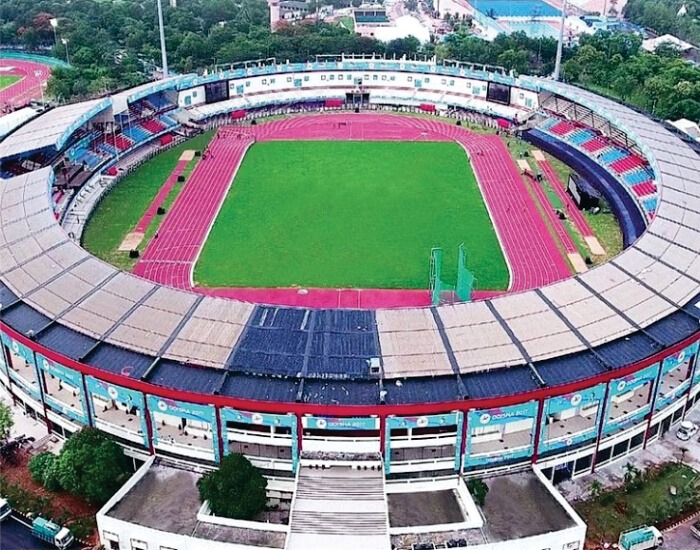Stadiums Throughout India: An Indicator of Sports Culture
BusinessTeam5/7/2024
 Pic Credit: Sportsmatik
Pic Credit: Sportsmatik
By Sujata Muguda, Shreyas WebMedia Solutions
7/5/2024: India, a nation where sports are woven into the cultural fabric, boasts an impressive array of stadiums that cater to a variety of sports, reflecting the country's diverse sporting preferences. From cricket, the nation's beloved pastime, to football, athletics, and beyond, India's stadiums are not just structures of brick and mortar; they are arenas where dreams are chased, records are set, and legends are born.
As of the latest data, India has 52 international cricket venues, more than any other country in the world. This number is a testament to the country's passion for cricket, a sport that commands a following akin to a religion. The Narendra Modi Stadium in Ahmedabad, with a staggering capacity of 132,000, stands as the world's largest cricket stadium, a colossal arena that epitomizes India's love for the game.
But cricket is not the only sport that finds a home in India. The Vivekananda Yuba Bharati Krirangan in Kolkata, with a capacity of 68,000, is one of the largest football stadiums in the world and showcases the country's growing interest in football. Similarly, the Jawaharlal Nehru Stadium in Delhi, with a seating capacity of over 60,000, is a multipurpose venue that hosts both football and athletics events, highlighting the multifaceted nature of India's sports infrastructure.
The Kalinga Stadium in Bhubaneswar, Odisha, is another prime example of India's versatile sports venues. It is a multi-purpose international stadium that has facilities for athletics, football, field hockey, and more, and it has been a pivotal ground for hosting numerous national and international events.
These stadiums are more than just sporting venues; they are hubs of development that spur economic growth and community engagement. They serve as landmarks that inspire pride and unity among the citizens. The East Coast Railway Stadium in Bhubaneswar is a beacon for cricket enthusiasts, and its ongoing renovations aim to elevate it to international standards, further enriching India's cricketing landscape.
Moreover, the stadiums are not confined to the major cities alone. Smaller cities and towns also boast impressive venues, such as the Barabati Stadium in Cuttack and the Greenfield International Stadium in Thiruvananthapuram, ensuring that the spirit of sports permeates every corner of the nation.
The proliferation of stadiums across India is not just about numbers; it's about accessibility and opportunity. It's about providing platforms for young talent to emerge and for communities to rally around their local teams. It's about creating spaces where sports can be celebrated, where every match played and every record broken adds a new chapter to India's rich sporting narrative.
In conclusion, India's stadiums are more than mere playfields; they are the heartbeats of cities and towns, echoing with the cheers of millions. They stand as proud symbols of India's commitment to sports and its unwavering spirit to foster athletic excellence. As India continues to host major sporting events and its athletes shine on the world stage, these stadiums will remain central to the nation's sporting saga, inviting fans from all walks of life to witness history in the making.